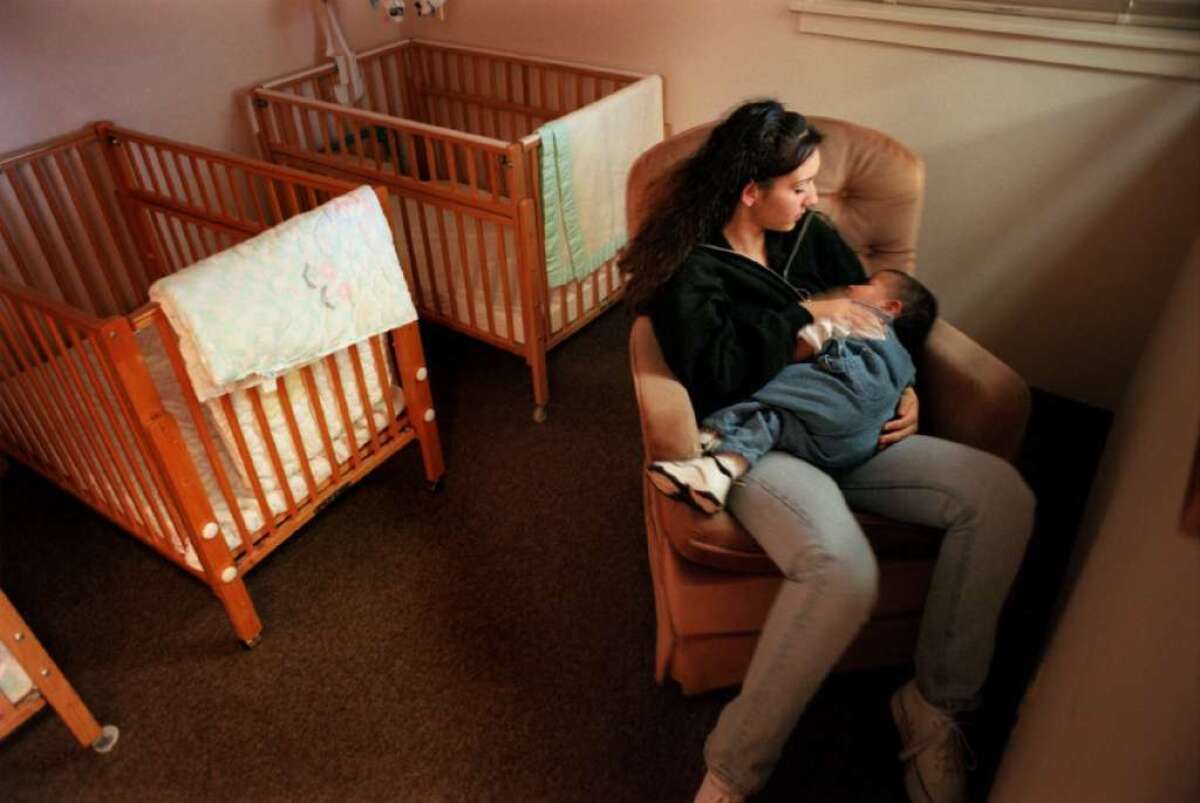Teenage pregnancy, birth, abortion rates all falling, report says

- Share via
Looks like good news may come in threes. The teenage pregnancy rate, birth rate and abortion rate have all dropped sharply since their respective peaks in the 1990s, according to new research by the Guttmacher Institute, a nonprofit organization focused on reproductive health.
The recent fall in these three rates shows that teen births may be down in part because fewer teens are getting pregnant in the first place, researchers said.
The teenage pregnancy rate dropped 51% between 1990 and 2010, according to the report. The 2010 rate of 57.4 pregnancies per 1,000 teenage girls and women 15-19 also represents a drop of 15% since 2008 alone.
The teen birthrate also declined by 44%, from its peak in 1991 of 61.8 to 34.4 births per 1,000. The teen abortion rate experienced the steepest drop of 66%, from 43.5 abortions per 1,000 at its 1988 peak to just 14.7 per 1,000.
“This report demonstrates that, in fact, fewer teens are becoming pregnant than at any time since tracking of this data began — reflecting our finding that both birthrates and abortion rates among teens have steadily declined,” the study authors wrote.
The declines were seen across racial and ethnic groups, declining 56% among white teenagers (from 86.6 to 37.8 per 1,000), 56% among black teenagers (from 223.8 to 99.5 per 1,000) and 51% among Latino teenagers (from 169.7 to 83.5 per 1,000).
Lead author Kathryn Kost, a Guttmacher researcher, called the teen pregnancy decline “great news.”
“It appears that efforts to ensure teens can access the information and contraceptive services they need to prevent unwanted pregnancies are paying off,” she said in a statement.
Even as teen pregnancy rates were going down across the United States, progress from state to state was uneven. New Mexico had the highest rate, with 80 pregnancies per 1,000, and New Hampshire had the lowest, with 28 per 1,000.
The news comes nearly a month after a report from the U.S. Centers for Disease Control and Prevention found that 83% of young women between 15 and 17 said they’d taken a formal sex education class – one in which they could potentially learn about birth control options – after they had already lost their virginity. This mistimed education, the CDC report said, “represents a missed opportunity to introduce medically accurate information.”
But the Guttmacher report appears to indicate that enough young people seem to be getting the message. Now, they argue that the next step is to find out exactly why that happened.
“Further research will be needed to understand the behavioral, social and economic factors that are affecting these trends,” the study authors wrote. “Specifically, research will need to address not just why fewer teens and young adult women are having births, but also why fewer are becoming pregnant.”




